Advertisement
A better understanding and a hope for better outcomes
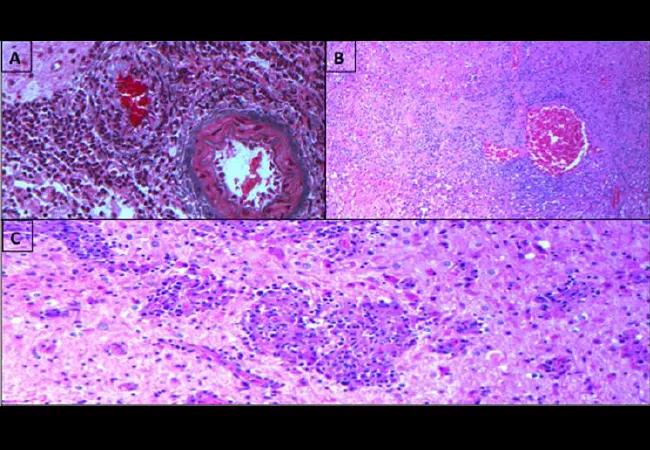
By Rula Hajj-Ali, MD, Daniel Culver, DO, and James Fernandez, MD, PhD
Advertisement
Cleveland Clinic is a non-profit academic medical center. Advertising on our site helps support our mission. We do not endorse non-Cleveland Clinic products or services. Policy
Although common variable immunodeficiency (CVID) typically involves hypogammaglobulinemia and recurrent infections, between 8 and 22 percent of patients also develop granulomatous disease. We have very little data regarding the presence of granulomatous disease in the central nervous system (CNS), and in this case series, we’ve tried to pinpoint clinicopathologic features that may prompt further study.
CVID, the second most common primary immunodeficiency syndrome, is characterized by marked decreases in immunoglobulin concentration and frequently decreased B and T lymphocytes. We examined 19 patients with CVID and CNS manifestations — four Cleveland Clinic patients and 15 from a comprehensive search of the medical literature.
CNS manifestations included:
The patients were mostly white and female and were also likely to have lung involvement. Recurrent infections were common, and several concurrent autoimmune diseases were documented. Interestingly, five patients had a family history of autoimmune diseases.
Of the 12 patients with brain pathologic findings, 50 percent had angiocentric granulomas. The mean age of CNS granulomatous disease diagnosis (21.5 years) was lower than that of CVID diagnosis (24 years). An earlier report showed that a diagnosis of granulomatous disease prior to the CVID diagnosis is common (41 percent) and that delayed diagnosis of CVID may worsen prognosis significantly.
Advertisement
The table below describes the variation in treatment offered to patients, as current guidelines are limited and based on case reports. Determining the optimal treatment regimen for granulomas in CVID is a path of inquiry ripe for clinical research.
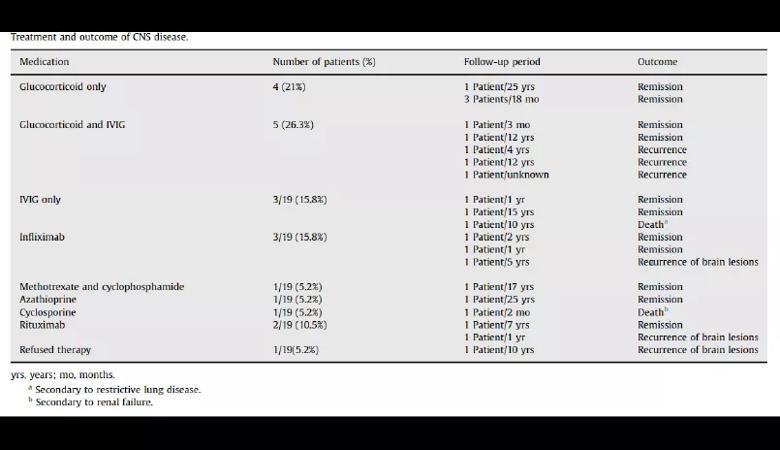
While granulomatous diseases have been associated with CVID, this first-of-its-kind case series raises awareness of the association between granulomatous diseases in the central nervous system in association of CVID. These data add to the diagnostic landscape of CNS granulomatous disease and provide an overview of the varying treatments currently in use for these rare manifestations of an already rare disease.
Dr. Hajj-Ali is Associate Director of the Center for Vasculitis Care and Research in the Department of Rheumatic and Immunologic Diseases. Dr. Culver is Director of the Sarcoidosis and Interstitial Lung Disease Program in the Respiratory Institute. Dr. Fernandez is staff in the Department of Allergy and Clinical Immunology.
Feature image: Demonstrates two blood vessels in the meninges (movatstain) — one vessel is normal and the other is overrun by inflammatory cells; (B) a large area of geographic necrosis with nuclear debris; the adjacent are as reveal a predominantly chronic inflammatory cellular infiltrate; and (C) a non-necrotizing granuloma. Image and caption republished with permission from Elsevier.
Advertisement
Advertisement

The agent-based model aims to improve prediction accuracy

VOC analysis could provide biological insight into risk factors associated with CDI

Quantum computing being studied as a means to help improve predictive performance, accuracy
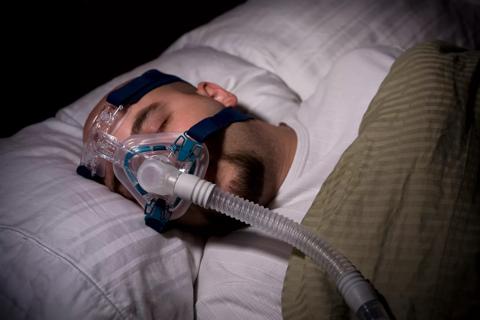
A review of conservative, pressure-based and surgical treatments for OSA

A review of IDSA and NIH guidelines
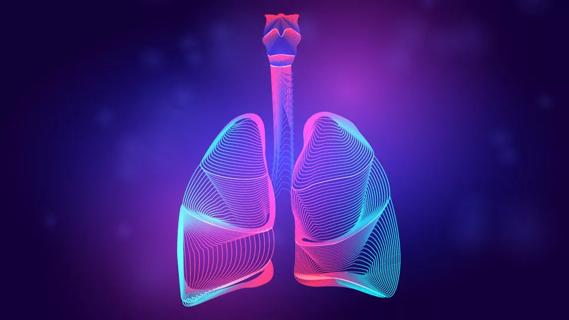
Volatile organic compounds have potential in heart failure diagnostics

Caregivers are provided with real-time bronchoscopy patient findings
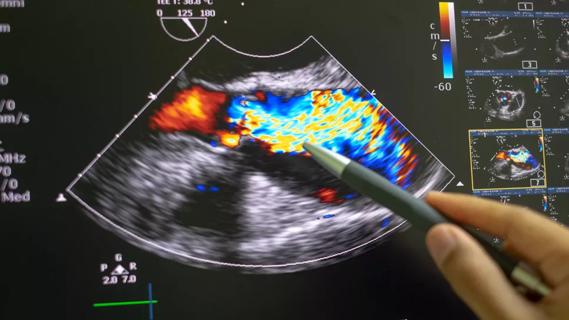
Insights for diagnosing, assessing and treating